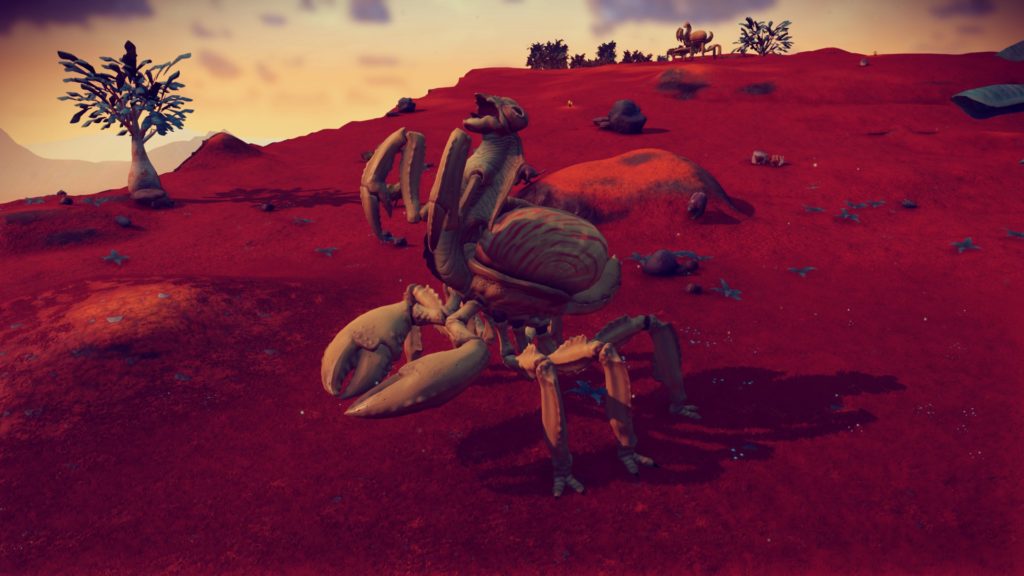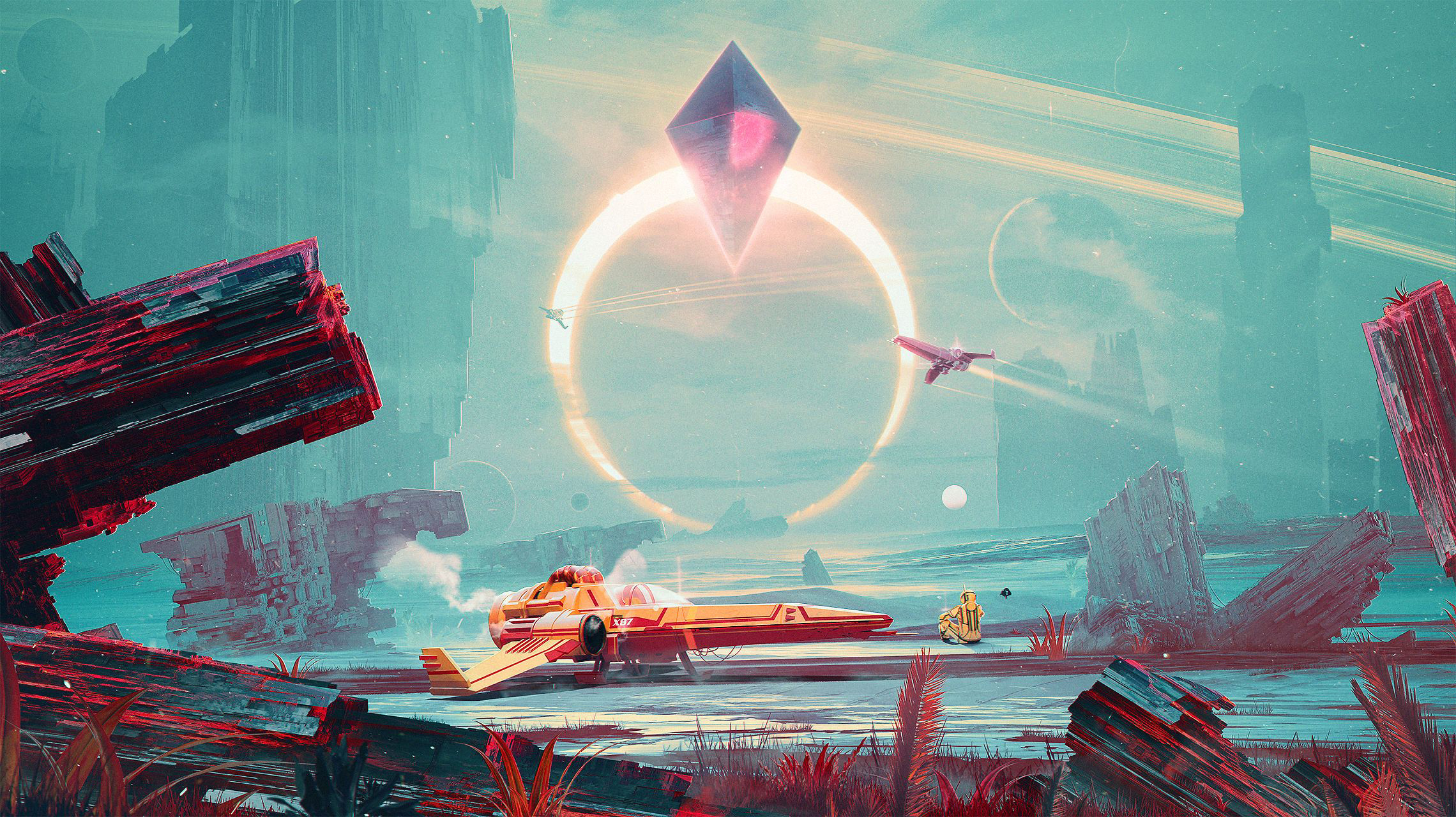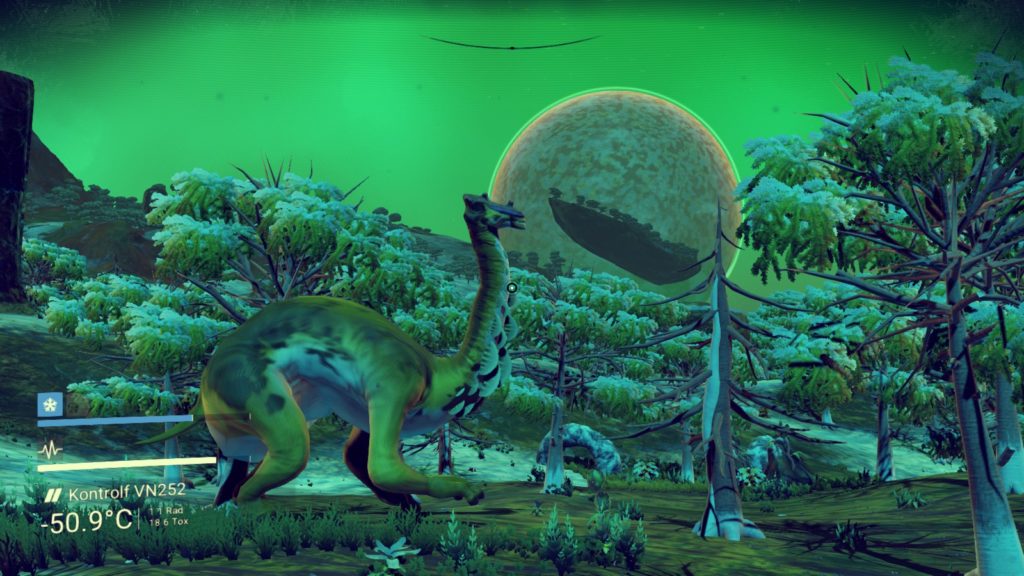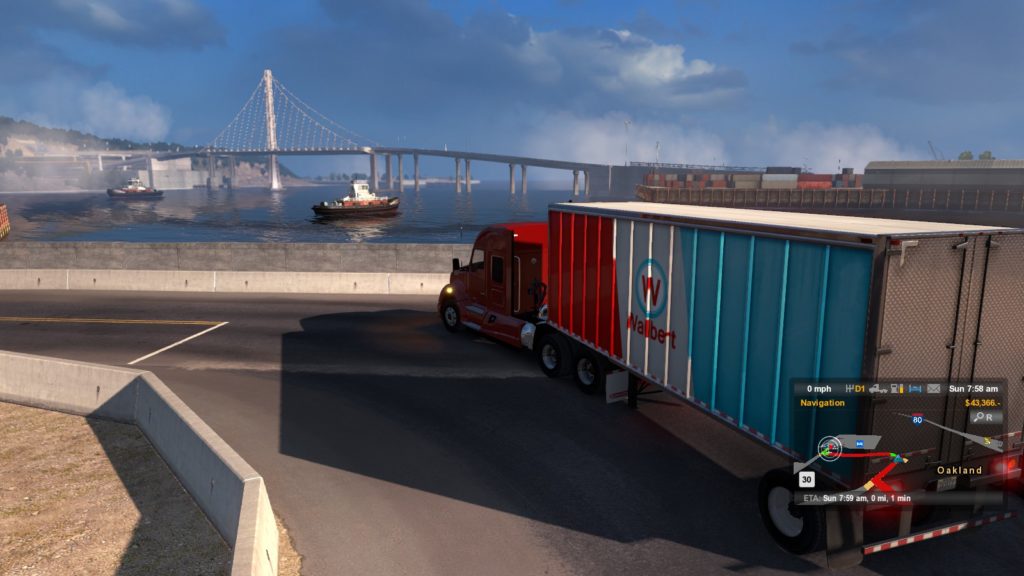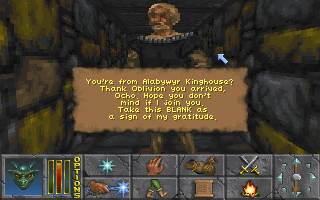It’s been a while since I’ve played No Man’s Sky and, to be fair, I thought I had completely written this game off entirely. When it first released in August of 2016, I fell deep into the hype trap, even shelling out the full $60 tag, something I am usually loath to do, and was subsequently burned. Once bitten, twice shy. After some more recent hype revolving around No Man’s Sky, though, this time with a $0 price tag since I’ve already bought into it, I decided to hop back in and check out what has really changed since launch. Find out what the ‘Next’ really means of the now titled ‘No Man’s Sky Next‘. Turns out, quite a bit has changed.
First of all, I find it weird that I’m using terminology and treating this game like it’s some sort of MMO, which now that there is some sort of real multiplayer going on I guess it is much closer to that. For all intents and purposes, though, No Man’s Sky Next still feels mostly single player. Which is fine by me. Usually, as a solo player, encountering other players in MMOs turns adversarial. We’re either fighting over the same drops, the same mobs, or fighting each other. That, as players, we’ve grown to consider this infighting ‘good, normal’ and ‘the way it should be’ is… odd. But I digress.
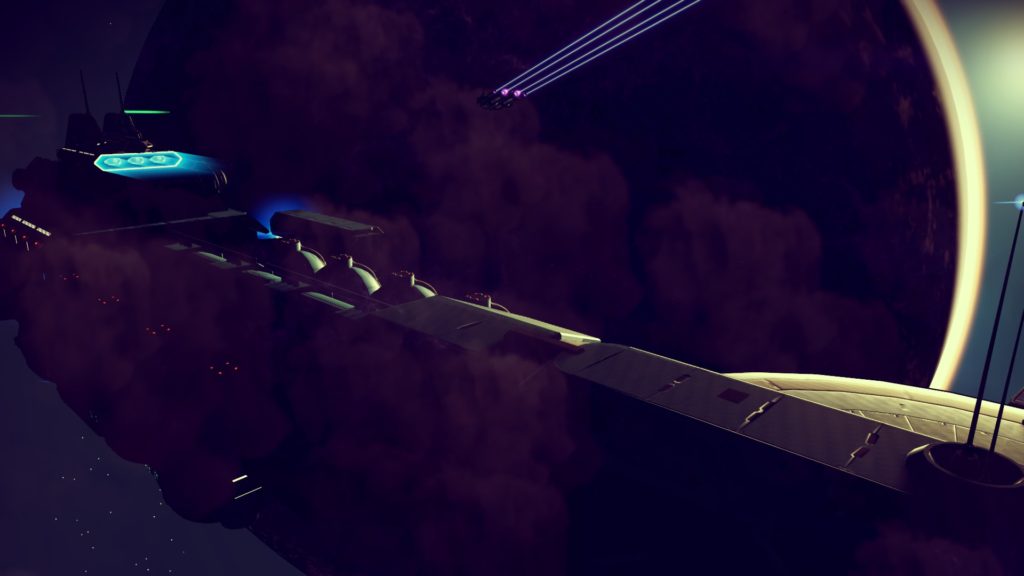
I delve back into No Man’s Sky Next after not touching it since release to see what has changed and if it’s worth playing again.
I remember when No Man’s Sky launched it felt like a wide ocean of content that was only a puddle deep. Everything was large and grand, but nothing felt important. There was no weight. Upgrades were acquired almost by accident and the primary focus was exploration… of similar, not-that-exciting locations. You could complete 99% of the game by just staying on the same planet you started on.
Now? Well, I’m not *entirely sold that No Man’s Sky Next is monumentally different, but it does feel a lot better. The focus has absolutely changed. Now, the focus is about building up your properties, your freighter fleet and your base, and completing the story missions. Your time spent on planets is transitory, hitting up only the points of interest you need to, and moving on. Which is good, because the less you see and pay attention to the procedural generation, the better. There was just not enough difference in the generation before. Now, it just feels… better. Planets feel more varied and look more populated. There’s more variety. I mean, there could always be even more variety in a game like this, but you don’t see the man-behind-the-curtain as much as you did two years ago.
Upgrades, too, seem to be made more from progress than from randomness, which is a much better feeling than just stumbling across the best weapon/ships in the game. That random big find is still included, too, though, but now instead of finding a big new ship, you now find a big *broken* ship that you need to spend a good chunk of time and resources fixing.
Again, it feels productive, not accidental. This is good.
Also, we need to talk about the screenshot capabilities. They are, hands down, the best screenshot options I have ever seen in any game. Period. And I consider myself a screenshot aficionado, so I don’t say this lightly.
At any time you can pause the game to take a screenshot. When you do, you can move the camera to any position around your character to take it, within a large distance. On top of that, if the lighting isn’t right, you can change the time of day and the position of the sun. You can add/remove clouds, change the depth of field, and even add an Instagram-like filter on top of all that. For real, all other games need to take a page from No Man’s Sky’s screenshot book. Screenshots are your players methods of advertising your game for you, and having a system like this only helps you.
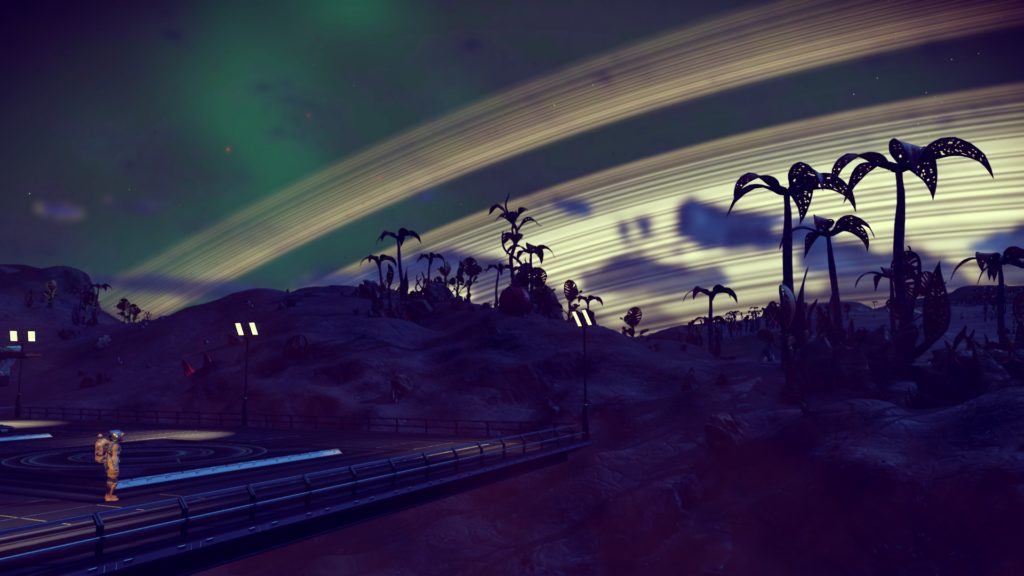
The Rings at Night! Glow Big and Bright! *clap clap clap clap* Deep In the Heart of… of… wherever this is.
So will I keep it up? No, of course not. I’m a rambling gamer and will pass quickly from game to game as my whim takes me. However, with No Man’s Sky Next focus having changed to one that feels purposeful instead of accidental, I’m a lot more apt to keep it going. Plus, the entire game fits into only a 10 GB footprint, which is efficient and impressive as anything.
It currently is still sitting at $60, though, which I wouldn’t say feels entirely worth it, but if it falls back down to $30, or even $40, I wouldn’t hesitate to suggest snapping it up. Have you hopped back into No Man’s Sky Next as well? Let us know on Twitter @SubCutured!
P.S. – If you’re looking for a good planet to settle down on, I highly suggest planet Ocho II in the Mucalls system. Red grass, bright sun, abundant resources, and a pleasant temperature all year long. Nice place to vacation. Just don’t murder me, okay?
Having had technology and the acquisition of technology be one of my foremost hobbies over the past decade or so, I’ve come to a very distinct realization: Technology, at its core, is just a tool. Seems simple, right? A tool is just an implement used to carry out a particular function. Like a hammer is just a tool. In game development, designers use multiple tools in their creative works, one popular tool of late is Procedural Generation.
Procedural Generation, at its heart, is the process of programming an application to design the content of a game using and working within a specified set of parameters. The use of procedural generation in video games goes hand-in-hand with the genre itself. Games like Rogue (1980), of which the term Roguelike is derived, was nothing but procedurally generated dungeons, one after another, that the player was meant to explore. This gave the game a never-ending appeal, where a little bit of code gave you a game that was always different than the last. Procedural generation has been used to do everything in gaming from creating environments, to dungeons, to loot lists, to sprawling towns and populations. In the end, though, it’s just a tool.
Everybody’s Sky
Kyle, one of the writers here at Sub-Cultured, has been enamored with No Man’s Sky. For good reason, too. No Man’s Sky, first off, is gorgeous. The art styles, the visuals, and the chance of seeing things nobody else is seeing are some of the game’s big positives. I also picked up the game within its first week of release and had some fun exploring the few worlds that I found, but in the end I found myself quickly losing interest. Yes, the worlds themselves could, at times, be very pretty, but I had a hard time feeling that anything I was accomplishing was meaningful or significant.
I was exploring all of these places that had already been explored before, I was re-naming animals and plants that were located around small settlements and surrounded by floating machines, constantly scanning them, and I was learning languages that, even after learning a metric ton of words, I still couldn’t understand what anyone was saying. Nothing I was doing felt like it had any impact on anything, or at worst felt like I was just already going where everyone had already gone before.
Overall, I blame the procedural generation and how heavily they used it. It is the hallmark of the game, how what you were seeing was never seen by any other player and it was special to you. Except that it had been seen before. When I came across my 50th giant tooth shaped plant (and was naming it ‘Yet Another Giant Tooth’), or my 30th wolf-looking creature with fungal spores all over it (‘Yet Another Diseased Wolf’), I had reached my limit.
No Man’s Sky‘s use of procedural generation, their hammer, felt like the only tool they were really using seriously, and when it duplicated assets, it was glaring. Any “story” was coming at what felt like a snail’s pace, and progression was also a slow process. This means that the way the developers wanted you to play involved just hitting one procedurally generated planet after another. Which means also seeing the same formations over and over in maybe varying colors or sizes. I’m not sure which writing outlet first used the phrase “18 Quintillion Bowls of Oatmeal“, but it certainly feels apt.
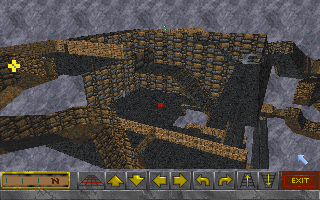
Daggerfall, one of the first 3D attempts at mapping seen in a video game. Not a great attempt, though.
ProGen Behaving Badly
Let’s be real, though, No Man’s Sky isn’t the first to overuse procedural generation. One of the biggest games of all time, literally, is one that used procedural generation to launch a franchise: The Elder Scrolls: Daggerfall. Coming off of the successful Arena, Bethesda wanted to make a game that truly felt like a world. Some sites posit that the full landmass of Daggerfall reaches a staggering 62,394 square miles! I started playing it not long ago and it isn’t kidding around. If you were to walk from one town to another, even if those towns were right next to each other, it would take you HOURS to do so. With 15,000 towns, cities, and villages to explore, the game wasn’t messing around. The first thing you bought was a horse and a wagon, because without them you were hosed.
The landmass of Daggerfall wasn’t even the worst of the procedural generation, though, it was the dungeons. Daggerfall‘s dungeons took multiple dungeon “sets” and patterns and hooked them together to form an overall dungeon. Combined with an uber-confusing three dimensional mapping system, Daggerfall would turn a simple low-level dungeon into an hours long slog through random-mob infested hallways, where sometimes monsters well above your level would lie in wait to wreck you. To put it lightly, Daggerfall‘s use of procedural generation was simultaneously complete overkill, frustrating, and completely unforgiving.
Randomness Isn’t Really Exploring
One of my favorite things to do in games, though, is exploration. I will look behind every nook and cranny, every little path, every little tiny area, and in most games that exploration is nicely rewarded with either a nice sight, some extra loot, or some easter egg. They are specifically placed on the game map by the developers, though. When you start making everything through procedural generation, you lose those little rewards. Everything you could possibly encounter by checking every nook and cranny is just as available as any other point. The entire gaming world gains a homogeneity that stops rewarding exploration simply by its very nature.
There was a poll given by the developers of Star Trek Online on their forums once that once asked the players “What do you really want to see in Star Trek Online?” The biggest response back was simply “Exploration”. Since the tagline of Star Trek is “To boldly go where no one has gone before”, though, this shouldn’t come as a surprise. The problem was that the game already had an “exploration” system. They combined random scenarios, randomized enemies, randomized aliens, and placed them on some randomized maps. To the majority of players, although what you were seeing was fresh, it didn’t “feel” like exploring.
I don’t blame the players, though, it truly *didn’t* feel like exploration. To hit this home, the game that I play that hits that exploration button the best is American Truck Simulator. Sure, ATS uses some procedural generation to save time on creating the environments, but it’s seeing all the specific locations and special places that makes the exploration worthwhile. It isn’t what is random that taps that exploration feeling, it’s what is purposefully placed that you’re seeing for the first time.
ProGen Is A Good Tool, But Shouldn’t Be The Only Tool
If you take a look at some of the best games of our day, though, like Diablo, you’ll see that they all use procedural generation. However, their use becomes reserved to creating large, similar themed environments without sacrificing development resources and isn’t a crutch. Procedural Generation isn’t going to go away anytime soon, and it really shouldn’t because it’s such a useful tool.
What makes a great game, though, is using many different tools in its construction. Use some ProGen, some story, some good mechanics, decent audio, music, setting, etc. and put all together you have a great game. Relying on any one tool will make that tool stand out and show its flaws.
No Man’s Sky I feel was relying just too heavy on the procedural generation, and it was their downfall. Even compared to a game like Elite: Dangerous that also relies on space exploration and a ginormous universe, Elite feels more fleshed out and your actions feel like they have more weight.
I hope that we haven’t heard the end of No Man’s Sky, though. It has so much potential and can be so much more than it is. It’s at a good starting point and can only go up, but it will definitely need something more than just procedural generation to get players back.
Ah gaming. It’s one of the rare pleasures of life. Video games are an addiction, an obsession, a forgotten remembrance for those of us who are forced to adult. In honor of Gaming Month on Sub-Cultured, I have written a short lament for all the gamers like myself who are missing out on all the latest and greatest happenings this Fall. I present to you, an ode:
“For those too busy to play
who are caught in their jobs and their pay
time with the family, exercise, keeping sanity
the Xbox sits idle all day
We long for that place
flying through time and space
where the land is acclaimed No Man’s Sky
Sounds of Doom filled the room
as we blasted and leveled
Running through ancient dungeons and tombs all disheveled
Nothing could stop us with Legions and boss hunts
instances we transitioned and lead inquisitions
while our armies protected our grunts.
We try to recapture our fun and our laughter
but we keep on displaying low prioritizes for playing
Time we can’t seem to catch, pokeballs we dispatch
and still always end up with disaster”


